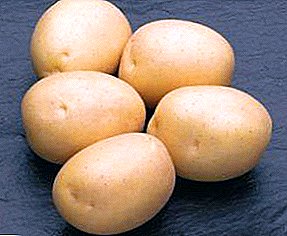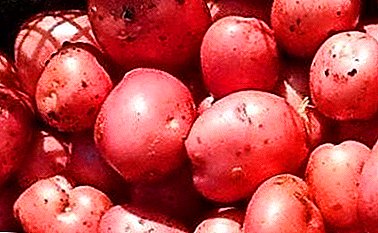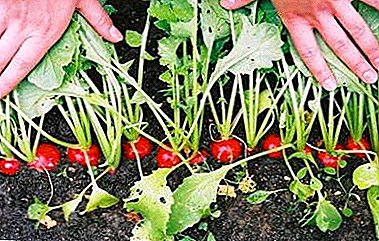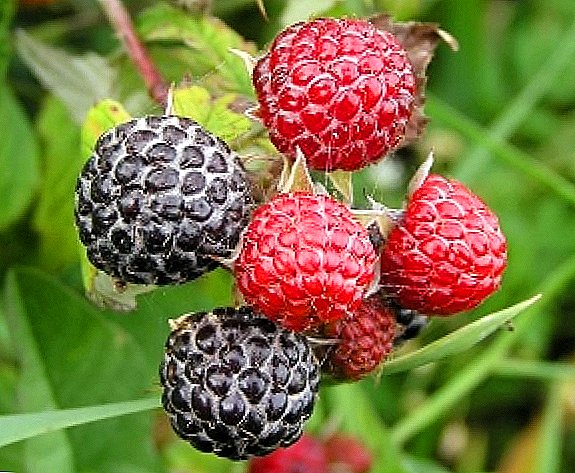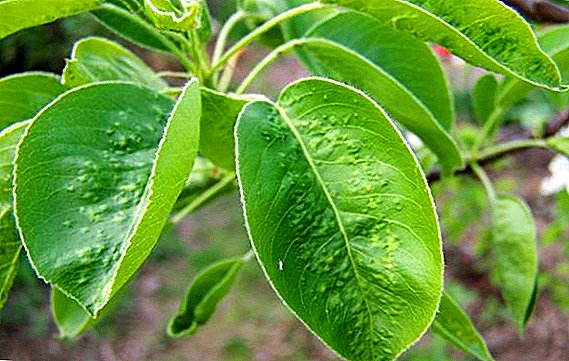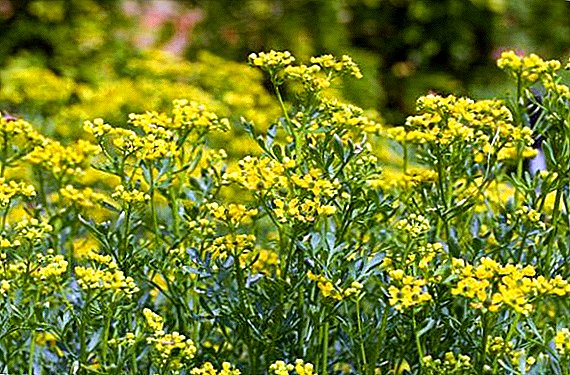 In order to get the greatest benefit in the process of growing geese, it is necessary to select the type of feeding appropriate for them. It can vary significantly depending on the economic tasks you set (obtaining the maximum number of eggs, rapid weight gain, harmonious development of birds, etc.), weather and temperature conditions, breed of bird, etc. In this article you will find all the necessary information on how to feed the geese in different situations, what their diet should be, as well as examples of improperly formulated rations.
In order to get the greatest benefit in the process of growing geese, it is necessary to select the type of feeding appropriate for them. It can vary significantly depending on the economic tasks you set (obtaining the maximum number of eggs, rapid weight gain, harmonious development of birds, etc.), weather and temperature conditions, breed of bird, etc. In this article you will find all the necessary information on how to feed the geese in different situations, what their diet should be, as well as examples of improperly formulated rations.
Types of feeding
In modern agriculture for the purpose of breeding geese at home are used three main types of feeding: dry, combined and wet.  The most suitable for adequate development of these birds and to maximize the benefits in the conditions of the home farm are wet and combined feeding, because they imply introduction into the diet of various types of local food, for example: the remnants of vegetables and greens, cabbage, tops, rutabaga, etc.
The most suitable for adequate development of these birds and to maximize the benefits in the conditions of the home farm are wet and combined feeding, because they imply introduction into the diet of various types of local food, for example: the remnants of vegetables and greens, cabbage, tops, rutabaga, etc.
Did you know? Geese are long-lived birds. An ordinary domestic goose lives on average up to 18-20 years, and the Vladimir breed geese can live up to 25-30 years.
Dry type of feeding implies a diet consisting of a variety of solid vegetable feed and a variety of feed. It has become much more common in industrial farms, because it contributes to a more rapid mass gain of the bird, which makes it possible to slaughter poultry for meat with a high economic value already 4-5 months later after it hatching from the egg.
What to feed the geese at home
First of all it is necessary to mention that the diet of these birds differs significantly depending on the season. It is also inextricably linked with the peculiarities of the biological work of their organisms, the presence of egg-laying and layers, as well as whether there are young animals in the herd. Below we will examine in more detail the basic principles of feeding geese in different situations. 
In the summer
In the warm season for geese, it is preferable to be on pasture feeding. This will allow them to accumulate a sufficient amount of various amino acids, vitamins, macro- and micronutrients for a successful wintering, in addition, will allow you to save a lot on the food supply for them. The lack of pasture feeding is that with a similar type of feeding geese will practically not gain weight.
Important! It would be better to accustom the birds to ensure that they receive evening feeding directly on the territory of your farm. So they will develop a reflex, thanks to which they will be returning home in the evening.
Pasture for grazing geese is best organized not far from the reservoirSince these birds are waterfowl and, accordingly, water has a very positive effect on their health. In addition, geese love to eat various aquatic plants, for example: parts, nasturtiums, cattails and reeds. Against the background of all other herbs, they primarily prefer dandelions, yarrow, sorrel and nettles.  During evening feeding is best to give your birds any wet food., preferably with a higher protein content, for example: corn, beans, wheat, vegetables, chaff, etc. If you want to speed up the process of weight gain, then it is recommended to add any dry feed to the diet of birds, but it must be remembered that dry food must be given in a mixture with wet food.
During evening feeding is best to give your birds any wet food., preferably with a higher protein content, for example: corn, beans, wheat, vegetables, chaff, etc. If you want to speed up the process of weight gain, then it is recommended to add any dry feed to the diet of birds, but it must be remembered that dry food must be given in a mixture with wet food.
Learn more about the composition and beneficial properties of dandelions, yarrow, horse sorrel, nettle, corn, beans, as well as the cultivation of sorrel, corn and beans.
In winter
Recommendations for feeding geese in this period largely depend on the prevailing weather conditions, however, their goal is almost always the same - to provide geese with a stable increase in live weight by the beginning of the next breeding period. Usually during the wintering period birds are transferred to three meals a day. It is necessary to feed at the same time, it will allow feathered to adjust the regular mode of the day and reduce the negative impact of various stress factors on their organisms.
Important! In the feed must be present additives that positively affect digestion, for example: sand, chalk, shell rock, table salt or gravel.
Most often in the winter for feeding the geese contained in the farm conditions, various grassy wastethat remain on the plots, as well as various boiled vegetable crops, waste and cleaning. Sprouted potatoes should not be given to birds, since the solanine contained in it can significantly harm the birds. Carrots, beets and cabbage are added to the feed in a finely chopped and raw form.  Good for goose weight gain during the wintering period silage. It almost fully retains all the beneficial properties of those plants from which it was made, and serves as an excellent source of a variety of nutrients and vitamins for birds. As the main source of vitamin C is very well suited conifer needles, which, in addition, help to increase appetite, increase egg production and improve the quality of the eggs themselves.
Good for goose weight gain during the wintering period silage. It almost fully retains all the beneficial properties of those plants from which it was made, and serves as an excellent source of a variety of nutrients and vitamins for birds. As the main source of vitamin C is very well suited conifer needles, which, in addition, help to increase appetite, increase egg production and improve the quality of the eggs themselves.
Read also about harvesting and storage of silage, silage of forage crops, growing corn for silage.
Stable and substantial weight gain by geese in winter is provided by a variety of grains. The most beneficial use of oats, barley, wheat and millet. As a nutritional factor, allowing to achieve even greater weight gain, you can consider crushed corn, as well as various legumes.
Diet and feeding rates
For normal development and stable weight gain, each individual should receive daily not less than 2 kilograms of various fresh greens. In the event that you do not have the ability to provide the entire herd with the proper amount of grass, then here is a small list of alternative products with weightacceptable to their health with which they can be replaced:
- beets, potatoes - up to 0.5 kg;
- cabbage - up to 0.4 kg;
- carrots - up to 0.1 kg;
- hay in various forms - 0.15 kg;
- grain - 0.07-0.1 kg;
- legumes - 0.05 kg;
- maize - 0.04 kg;
- feed with a high content of minerals - 0.025 kg.

Differences in feeding geese in different periods
Due to the diverse needs of these birds in different periods of their life cycle in nutrients, it is necessary to mention some features in the methods of their feeding. It is also necessary to be aware of the fact that it is possible not to change the diet of these birds with an eye to the various changes in their life cycle, but such changes will have a positive effect on their weight gain, egg production and other important agricultural parameters.
Learn how to choose a goose for a tribe, determine the sex of geese.
Before the breeding period (egg-laying)
The breeding period for geese usually begins from mid-February-early March, so most often the possibility of breeding birds on pastures does not yet exist.
During this period it is necessary especially carefully monitor the ration of ganderbecause their overweight can prevent them from fertilizing the geese. It is recommended during this period to give them more food containing proteins, for example: oats (best germinated), a small amount of meat and fish waste (10-20 grams).  To the geese a balanced diet, rich in various macro- and microelements, is necessary, since a lot of calcium, phosphorus and other substances are spent on the formation of egg structure. Usually, during this period, geese are fed with various chaff with the addition of mineral feed in the morning and afternoon, and in the evening they give some kind of grain feed.
To the geese a balanced diet, rich in various macro- and microelements, is necessary, since a lot of calcium, phosphorus and other substances are spent on the formation of egg structure. Usually, during this period, geese are fed with various chaff with the addition of mineral feed in the morning and afternoon, and in the evening they give some kind of grain feed.
Important! The geese will not start laying eggs if they are fed only grain, so try to always give them a variety of food containing all the necessary ingredients.
To ensure the preservation of weight by birds, it is recommended to carry out 3-4 single feedings, two of which should contain mixed or wet food, and the rest should be whole grains. It is important to closely monitor the state of mineral metabolism in your birds, since it is during the breeding period that it is most often disturbed. For its correction, it is recommended to give rakushnyak, limestone, chalk, etc. to birds.
Video: feeding geese before laying eggs
Feeding of hens
A month before the active egg-laying period begins, it is recommended that geese be transferred to enhanced nutrition. It is extremely important to make a diet that would be based on a diverse combination of green fodder and coarse inclusions. It is necessary to carefully monitor the weight of the birds, since the excessive mass can prevent them from properly implementing their maternal instinct.
Did you know? Geese have a rather unusual structure of the genitals. The male's penis has a spiral shape and reaches a length of up to 30 centimeters. The female genitalia have a similar structure.
During this period, you can also hold transfer of hens from three meals a day to four meals a day. It should be remembered that at least two feedings should consist of wet mixtures. It is recommended to give the hens as much hay, clover, alfalfa and meadow grass as possible. One week prior to the laying of eggs, it is recommended to introduce vitamin supplements into the diet. 
Parental flock
The feeding process of the herd herd is divided into two periods: productive and unproductive. In the first period, the need for geese in food is extremely high, but it is recommended to reduce the amount of roughage in the diet to a minimum. The process of reducing the amount of roughage and increasing the total mass of nutrient mixtures should occur gradually and after a few weeks it should look something like this (for each individual):
- concentrated feed - 0.15 kg;
- whole grains (legumes) - 0.1 kg;
- meat or fish waste - 0.03 kg;
- succulent feed (vegetables, herbs, grass) - 0.5 kg or more.
Gusak in this period is required special dressingconsisting of sprouted oats or wheat, raw chopped carrots, a small amount of protein waste, yeast, vitamin complexes and fish oil. It is necessary in order to prevent the ganders from possible exhaustion due to too frequent matings with the geese.
Check out the breeds of geese for home breeding: Toulouse, Kholmogory, large gray, Linda, Arzamas, Chinese, Danish legart, Hungarian white, Rhine.
It is best to feed food in the form of a wet mash in the morning and at lunchtime, and pour whole grain or legumes into the feeders in the evening and at night. It is imperative that in the given period it is necessary to feed the birds with limestone, phosphate or chalk, because at this time the processes of mineral metabolism are activated. During the non-productive period, the birds are fed according to the general recommendations. 
Feeding the young
In the first 2.5 months of their lives, goslings are distinguished by an extremely intensive growth index, for an adequate guarantee of which a particularly high nutritional diet is required. It is recommended to use dry or combined feeding with a special emphasis on feed mixtures containing an increased amount of protein inclusions.
Read more about feeding and growing goslings.
AT first three days they must be given food consisting of crushed grain (80%), crushed peas (5%), powdered milk (2%), and grass meal (3%). Starting from the fourth day of life, goslings, they are transferred to full-fledged feed, which must match the nutritional properties of their age. When the goslings reach the age of ten days, it is recommended to gradually introduce various animal components (meat and fish waste, yeast, bone meal, meal) into their diet.  When used for feeding various feeds, it is necessary to give preference to its granulated representatives to prevent the likelihood of various injuries to young animals and to increase the economic benefit from its use. Up to 20 days of age, it is recommended to give food with granules whose diameter is 3-3.5 mm, and after - up to 8 mm.
When used for feeding various feeds, it is necessary to give preference to its granulated representatives to prevent the likelihood of various injuries to young animals and to increase the economic benefit from its use. Up to 20 days of age, it is recommended to give food with granules whose diameter is 3-3.5 mm, and after - up to 8 mm.
Important! Goslings react badly to changes in feed, therefore it is recommended to transfer from one mixture to another gradually.
Feeding on meat
Usually, if all feeding rules are observed, the young grow up to 4 kilograms by the age of 2.5 months, however, this statistics can be significantly improved. If you purposefully grow these birds in order to slaughter them for meat, then try using one of their feeding methods designed specifically for quick weight gain by birds - these are intensive and meadow methods, which you can read more about below.
Meadow Fattening
This technique is much more popular in home farm conditions, because it allows reduce feed waste. Its essence lies in the fact that in addition to the standard for geese feeding on the pasture method, the ration adds to it a rather significant amount of various cereal crops.  The calculation of grain should be at least 0.4 kg per animal. Troughs containing cereals should always be freely available to the bird and should always be filled. It is also necessary to leave the light, because geese like to eat at night. Access to such an abundant amount of grains in combination with the usual diet leads to the fact that a month later each bird adds 1.5-2 kilograms in weight, while the fat layer remains quite weak.
The calculation of grain should be at least 0.4 kg per animal. Troughs containing cereals should always be freely available to the bird and should always be filled. It is also necessary to leave the light, because geese like to eat at night. Access to such an abundant amount of grains in combination with the usual diet leads to the fact that a month later each bird adds 1.5-2 kilograms in weight, while the fat layer remains quite weak.
Learn how to slaughter and cut the goose, as well as useful goose meat, fat, eggs.
Intensive fattening
When using a similar method of fattening, the bird can be slaughtered only after 2.5 months from the moment of its birth. The basis of this method is the active restriction of poultry in movement and the use of forced feeding. This is extremely necessary to increase the rate of gaining weight of geese.
Each individual is placed in a separate cage or box, the width of which should not exceed 30 centimeters, with a small opening for free access to the feed. To feed such a bird is necessary with the help of wheat, oats, corn and barley. When forced feeding rolls balls consisting of dough of a variety of flour (wheat, corn, oatmeal), bran and a small amount of salt, which are then placed in the poultry's esophagus. With this method of poultry maintenance, up to 150 grams per day is added. 
What can not feed
- green potatoes;
- potato tops;
- pumpkin;
- sorghum;
- lily of the valley;
- quinoa;
- ragweed;
- moldy and acidified feed;
- too liquid feed.
Important! In the manufacture of mash bags for geese, you must take it in your hand and check it for the amount of moisture, squeezing it in your hand. If the mixture crumbles - it is suitable for eating geese, if it flows out - it can clog the nasal passages, causing the bird to die.
How to determine that the diet is wrong
It is necessary to pay attention not to several main points of behavior and physiology of your birds. For example, too frequent and abundant bowel movements may be a sign that geese are getting too much green food or drinking too much water. If inclusions or blood appear in the feces, it is necessary to check the birds for the presence of a variety of infectious diseases with which the birds most likely became infected from the animal food components.
Also carefully watch the appearance of your birds. Excessive loss of feathers, the formation of a variety of irritations on the skin, the presence of non-healing wounds, changes in the structure of the paws and beak - all this can be a symptom of an unbalanced diet. It is also necessary to closely monitor how actively the poultry feed is eaten, and to change it in the event that the geese cease to show interest in it.
Video: feeding geese
Reviews of poultry farmers on feeding geese


So, we hope that you have found answers to all your questions concerning feeding geese at home. If you approach the issue of caring for these birds wisely, you will be able to save a lot of money and at the same time provide your family and all those who are hungry for tasty meat and other related products for a long time!


